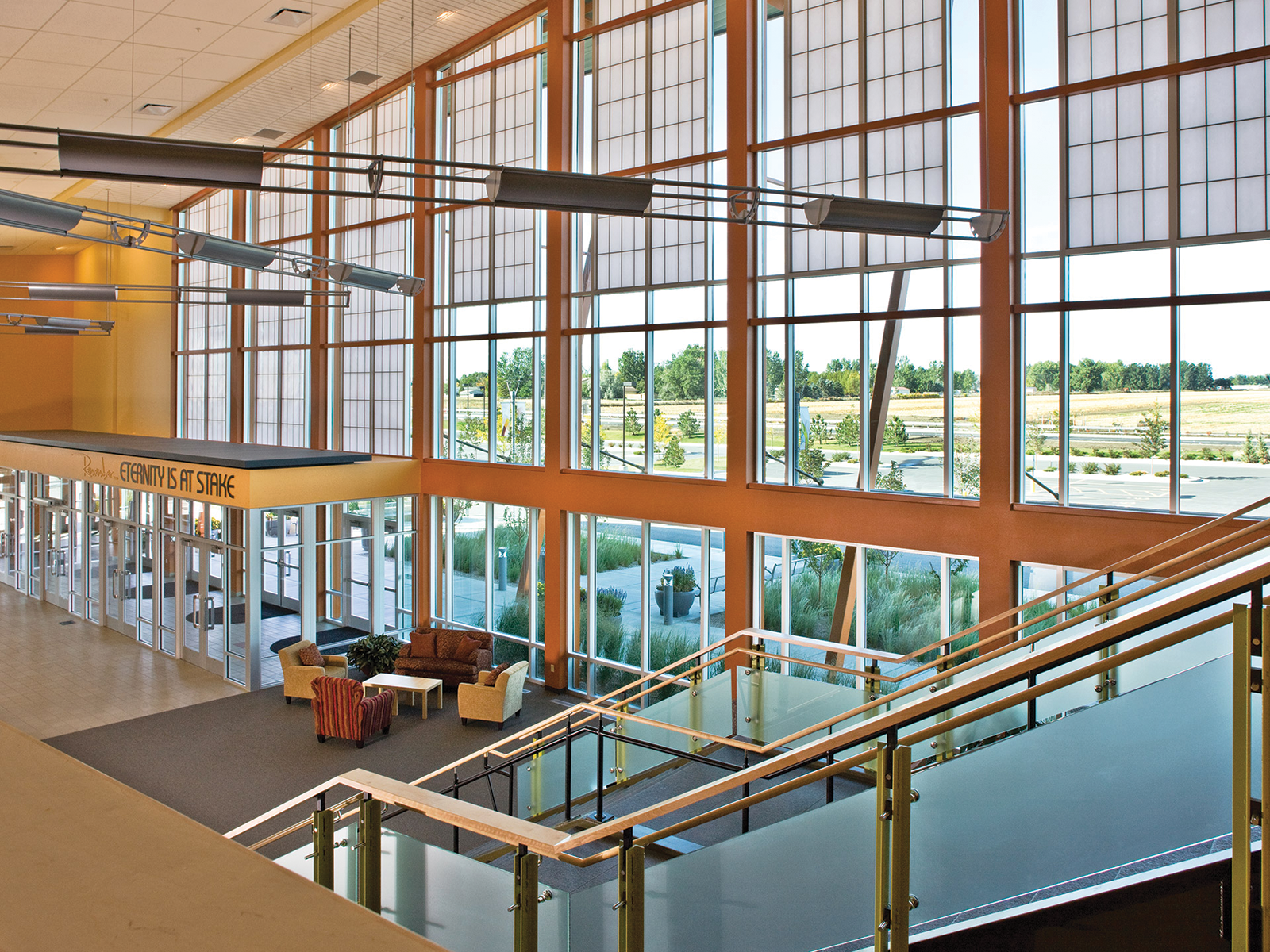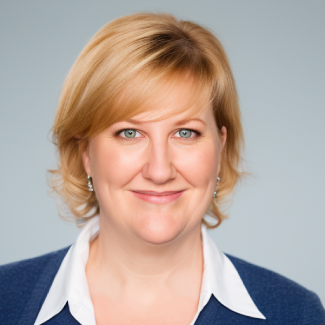Q + A with Kalwall Corp. | Shining a Light on Innovation
Translucent daylighting solutions promote human-centered design for healthy and sustainable buildings

Kalwall products appear across the U.S., from the Apple Campus headquarters in Cupertino, California, and the Wolfe Center for the Arts in Bowling Green, Ohio, to the New York Hall of Science in Queens, New York, and the Yale Sculpture Building in New Haven, Connecticut. Their products can be found in schools, museums, hospitals, churches, sports stadiums, airports and even the iconic NASA Vehicle Assembly Building at Kennedy Space Center in Florida.
 Kalwall Corp., founded in 1955 by inventor Robert R. Keller Sr., stands as a beacon of innovation in the realm of translucent daylighting systems. For nearly 70 years, Kalwall has been at the forefront of providing museum-quality daylighting solutions that cater to diverse architectural projects. From wall and window systems to skylights and façades, Kalwall’s offerings are designed to meet every need of a daylighting project, marrying functionality with aesthetic appeal.
Kalwall Corp., founded in 1955 by inventor Robert R. Keller Sr., stands as a beacon of innovation in the realm of translucent daylighting systems. For nearly 70 years, Kalwall has been at the forefront of providing museum-quality daylighting solutions that cater to diverse architectural projects. From wall and window systems to skylights and façades, Kalwall’s offerings are designed to meet every need of a daylighting project, marrying functionality with aesthetic appeal.
At the heart of Kalwall’s ethos lies a commitment to human-centered design. Guided by a mission to make the world a better place—one healthy, daylit building at a time—Kalwall emphasizes the profound impact of natural light on human well-being. With a focus on promoting sustainability, reducing carbon footprints, manufacturing safe and resilient materials, and energy efficiency in an evolving climate, Kalwall’s dedication to holistic design shines through in every facet of its operations.
The legacy of its founder echoes through Kalwall’s journey. A lifelong inventor inspired by the marvels of flight, Keller’s ingenuity led to the development of the iconic Kalwall insulated, light-transmitting technology, revolutionizing the architectural landscape worldwide. From the iconic U.S. Pavilion at the 1958 Brussels World’s Fair to contemporary landmarks like the Apple Campus headquarters, Kalwall’s footprint spans across diverse architectural marvels, testament to its enduring legacy of innovation and excellence. As Kalwall nears its 70th year celebration, its mission remains unwavering: to illuminate spaces with the transformative power of daylight, enriching lives and shaping a brighter future for generations to come.
I recently sat down with Samuel Keller, vice president of product development, and one of the five grandchildren of founder Robert R. Keller Sr. working at Kalwall, to discuss the company’s approach to distinguishing themselves in the industry through innovative technology, extensive customization options, and a commitment to quality and sustainability.
How has Kalwall evolved over the years, and what sets it apart?
We pride ourselves on being the market leader in high-performance translucent daylighting. We can claim many industry firsts over the years, but our core competence is still essentially the same. Kalwall offers a versatile, mass-customizable, daylighting system that can be tailored to meet a wide variety of project needs. Everything we do is built to specifications because no two buildings are the same. In the end, I think what sets us apart is our reputation as an innovator, Kalwall’s brand awareness among AEC professionals, and our track record of delivering product on time and on budget.
We have a broad reach, a network of trusted distributors and installers, and other strategic advantages that we have honed over time. That matters a lot but, even more so, we offer a useful and timely building technology that solves real problems and performs well over the long term. All buildings benefit from well-designed, naturally daylit spaces, but the ultimate Kalwall differentiator is the light quality our systems produce. We transmit full visible spectrum daylight and diffuse it completely for well-lit, glare-free, interior spaces.
The movement toward daylighting, energy efficiency and thermal performance are still leading architectural design. How are you addressing these trends?
Our 175CW translucent insulated glazing unit, or TIGU, is a new solution that makes it easier to design with Kalwall for façade applications. We live in a glass and aluminum-dominated world, and in many cases, designers have already specified their curtain wall or storefront system and they’re evaluating glazing options separately. Kalwall 175CW is our effort to provide a high-performance, translucent glazing that integrates seamlessly into more of those framing systems. These 1-3/4-inch-deep TIGUs were developed to match triple-pane IGU thicknesses, compatible with most thermally improved curtain wall systems available.
What specific features or technologies differentiate it from existing products?
Our mission is to bring balanced, natural daylight into more buildings, and this new solution makes doing so much easier. While this kind of curtain wall integration option is new for us and for the designers and specifiers we work with, we can now offer the added convenience and suitability for more projects. There are so many projects where designers and specifiers are looking to mix and match glazing materials into the same framing system. With 175CW, coordination and integration are greatly simplified, making it virtually ‘plug and play’ for designers and installers. We want to make all our products easy to work with, and the offered advantages so compelling, that they are hard to ignore.
Can you describe the design and development process involved, any challenges?
It was interesting. The product development challenge here was to take an inch of thickness out of our standard 2-3/4-inch Kalwall panel without losing a third of the properties we’re known for. We worked hard to optimize both the glazing performance—visible light transmissittance, U-factor and solar heat gain coefficient—and the strength-to-weight of the product to perform well in a variety of four-sided capture, curtain wall systems. In the end, we achieved values that are very close to the thermal performance and solar control associated with our thicker 2-3/4-inch and 4-inch panels making the 175CW a glazing option for any low- to mid-rise building in North America.
Are there specific industry challenges that you believe deserve more attention?
Our main challenges are getting more people to consider translucency instead of, or alongside, transparent materials like vision glazing, and for more design professionals to understand the science of daylighting to deliver and manage natural light within buildings. Transparency is great for providing views and visual connection, but translucency is better for producing quality daylight.
What developments can we expect from Kalwall in terms of daylighting solutions?
We have several areas of ongoing R&D, and are developing more versions of TIGU products. We’re also looking at building-integrated photovoltaics for power generation, daylight harvesting optimization with dynamic glazing technologies, and reducing embodied carbon and planning for end of life, among others.
The building envelope acts as a kind of second skin, and we increasingly spend our days inside, so there will continue to be more innovation that will further optimize building performance, minimize environmental impacts, and prioritize human-centered design solutions that support people living, working, learning and playing in the built environment every day.



